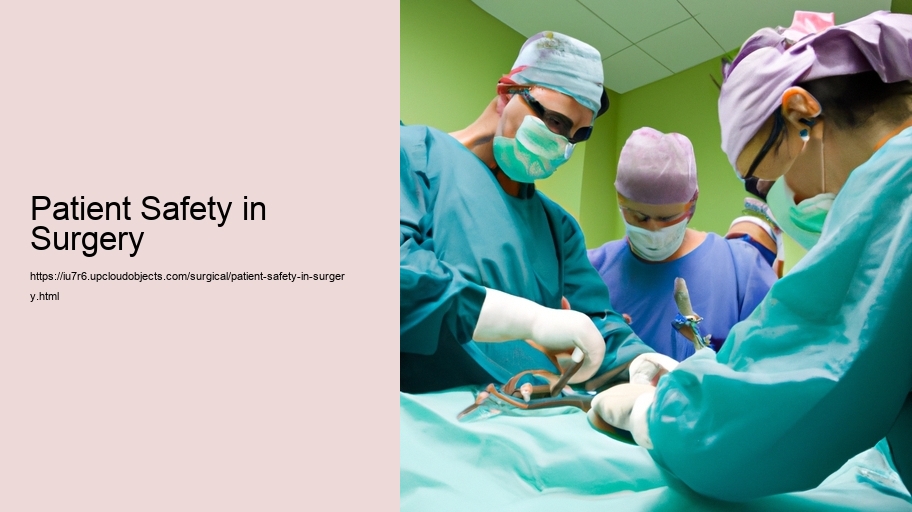Patient safety in surgery is a critical aspect of healthcare that demands meticulous attention and continuous improvement to ensure the wellbeing and recovery of patients undergoing surgical procedures. The importance of safety in the operating room cannot be understated, as the risks associated with surgical interventions can be significant and, in some cases, life-threatening. This essay will explore the various dimensions of patient safety in surgery, including the challenges faced, strategies for improvement, and the role of healthcare professionals in fostering a safe surgical environment.
Surgery is inherently risky due to the potential for complications, errors, and adverse events. The stakes are high, and the margin for error is small. Patient safety in surgery encompasses a broad range of practices designed to prevent harm to patients, including preoperative preparation, intraoperative techniques, and postoperative care. It involves a holistic approach, ensuring that the entire surgical process is conducted under the highest standards of practice to minimize the risk of infection, medical errors, and other complications.
One of the primary challenges in ensuring patient safety in surgery is the complexity of surgical procedures and the variability of patient conditions. Every patient is unique, requiring personalized care plans and consideration of their specific health status, medical history, and potential risks. This necessitates a thorough preoperative assessment to identify any issues that could compromise safety during surgery, such as allergies, coexisting medical conditions, or medication interactions.
Communication is another cornerstone of patient safety in surgery. Miscommunication between healthcare professionals can lead to disastrous consequences. Effective communication is crucial at every stage of the surgical process, from discussing the surgical plan with the patient to handing off care between team members. Surgical teams must work cohesively, ensuring that every member is fully informed about the patient's status and the details of the procedure.
The implementation of standardized protocols and checklists has been a significant advancement in patient safety in surgery. The World Health Organization's Surgical Safety Checklist is one example of a tool that has been widely adopted to enhance communication and ensure that critical safety steps are not overlooked. Checklists help ensure that essential processes such as confirming patient identity, marking the surgical site, and accounting for surgical instruments and sponges are consistently followed.
Advancements in technology have also played a pivotal role in enhancing patient safety in surgery. Innovations such as robotic surgery, real-time monitoring systems, and electronic health records contribute to more precise procedures, better tracking of patient information, and reduced risk of errors. However, the adoption of new technologies also requires adequate training and oversight to prevent new types of errors from emerging.
Education and training are essential components of promoting patient safety in surgery. Surgeons and surgical teams must be well-trained in both technical skills and non-technical skills, such as teamwork, decision-making, and stress management. Ongoing education and simulation training can help surgical teams stay current with best practices and prepare for unexpected situations.
Lastly, a culture of safety within healthcare organizations is fundamental to the success of any patient safety initiative. This involves creating an environment where healthcare professionals feel comfortable reporting errors or near misses without fear of retribution. Learning from these incidents is critical for developing strategies to prevent future occurrences and for fostering a continuous improvement mindset.
In conclusion, patient safety in surgery requires a multifaceted approach that addresses the complexities of surgical care. It involves careful risk assessment, clear communication, adherence to standardized protocols, leveraging technological advancements, thorough education and training, and the cultivation of a safety-first culture within healthcare institutions. By prioritizing these elements, the surgical community can continue to make strides in protecting patients and ensuring the best possible surgical outcomes.
